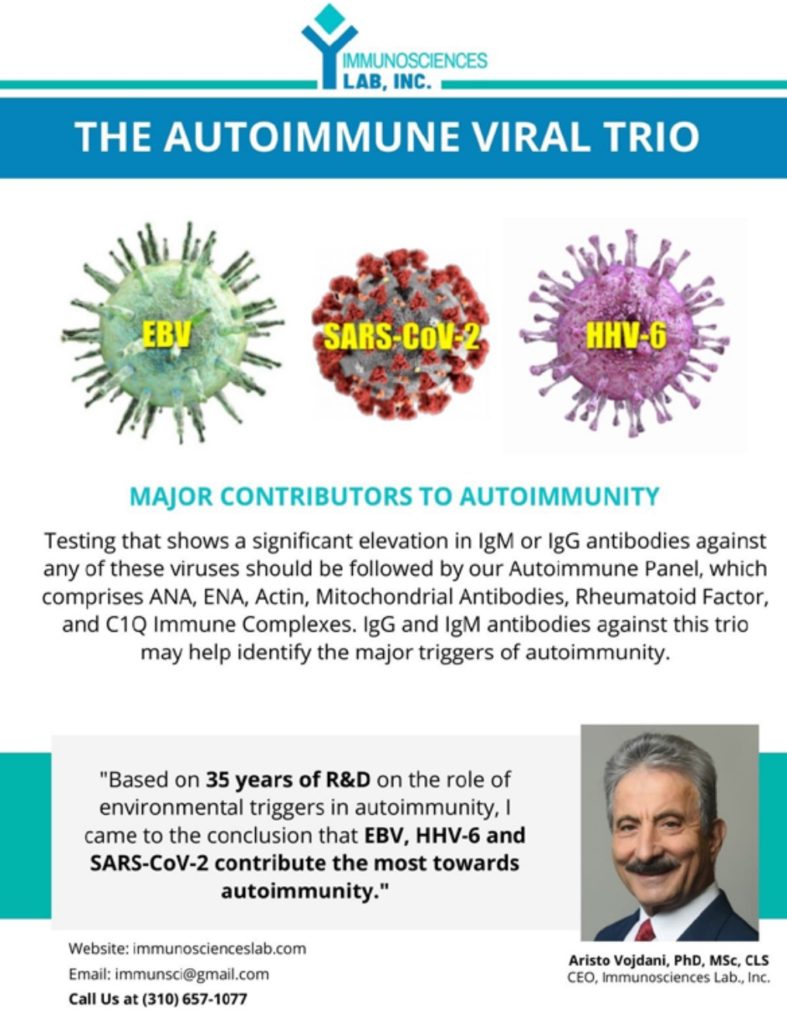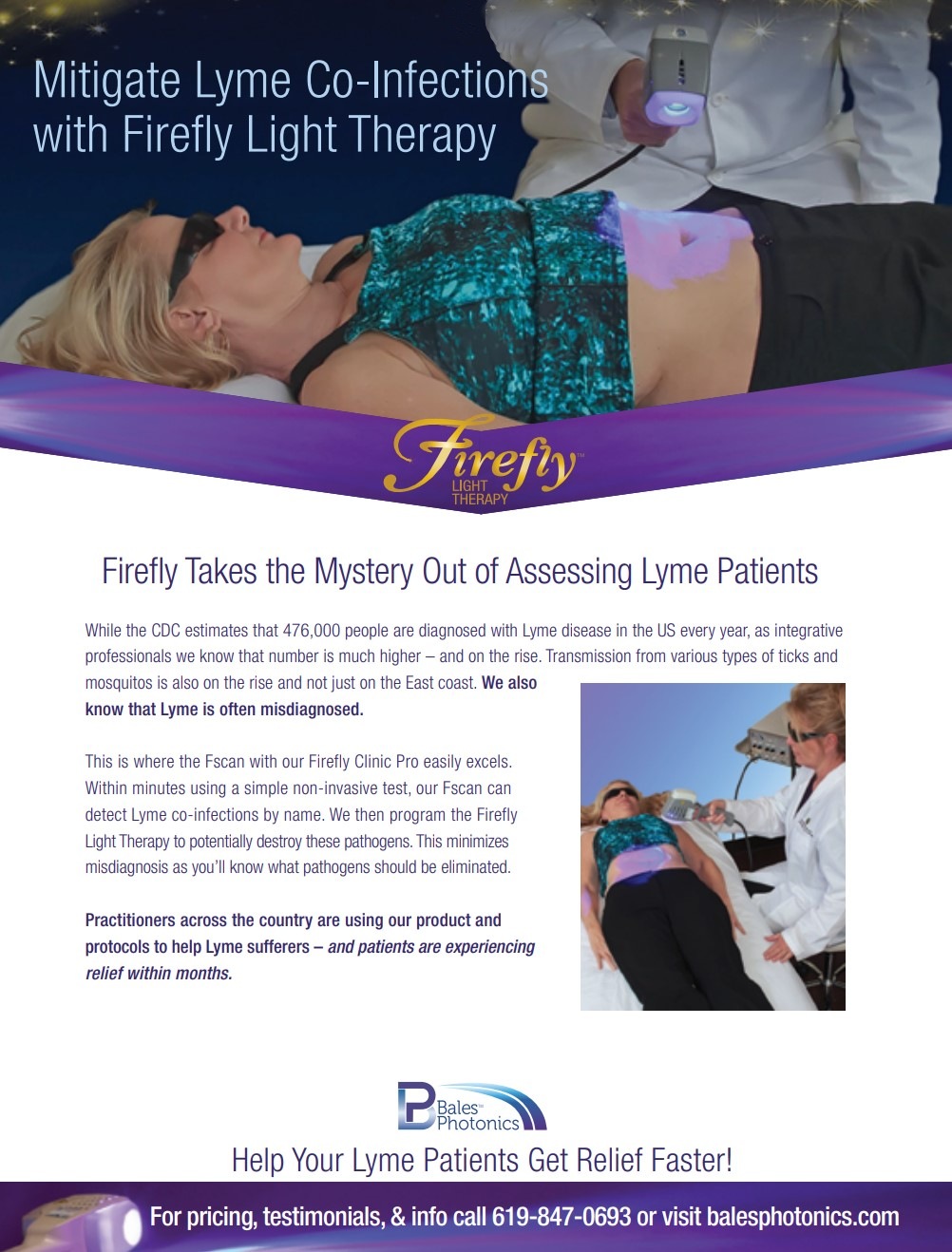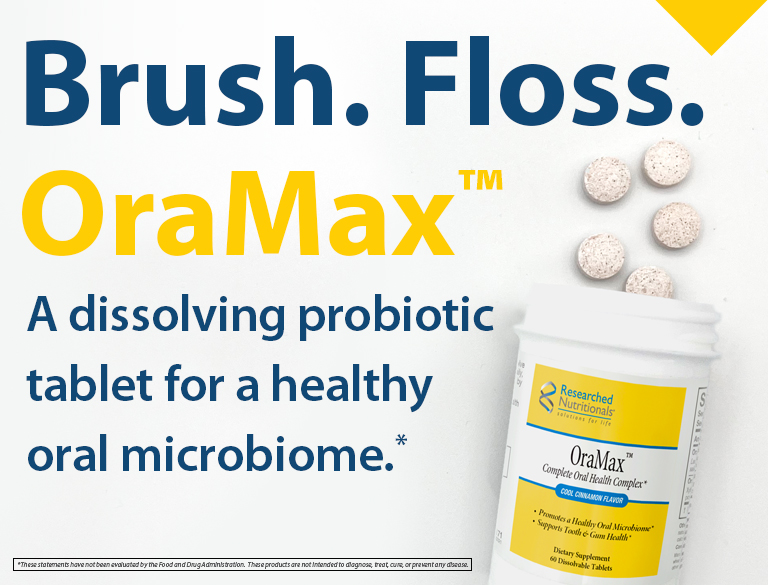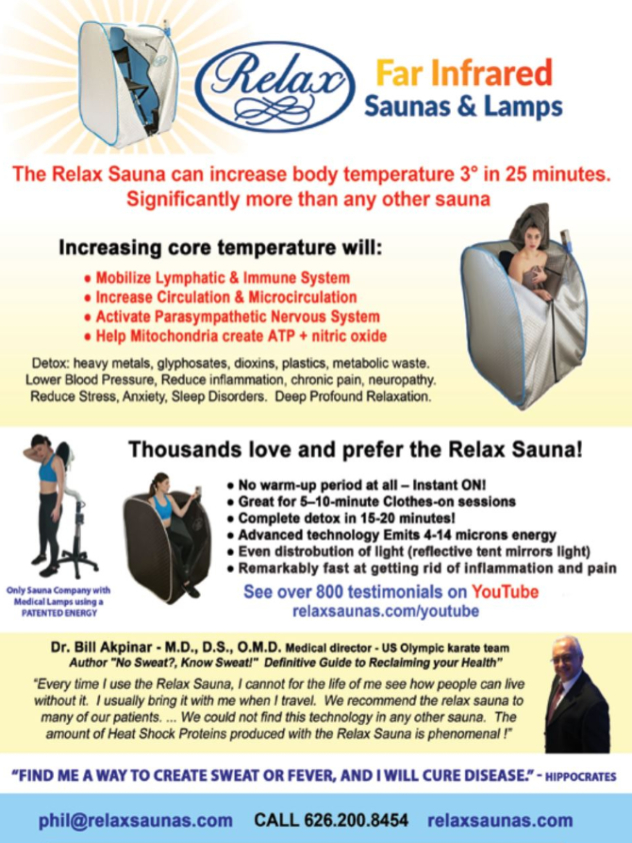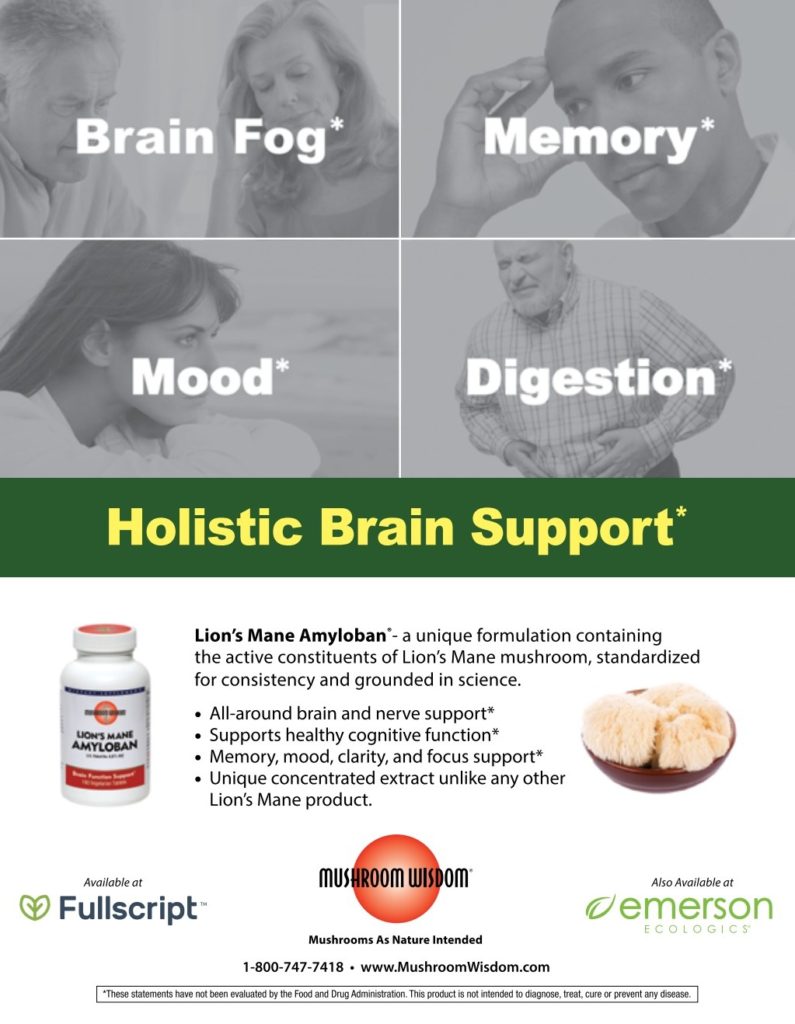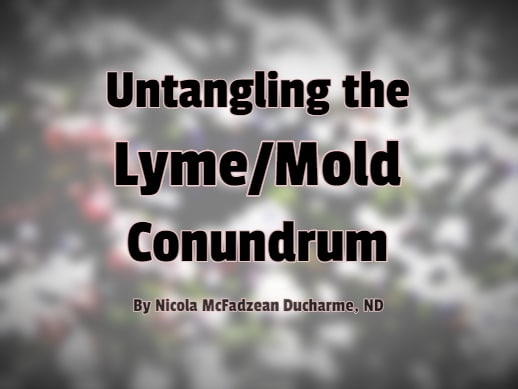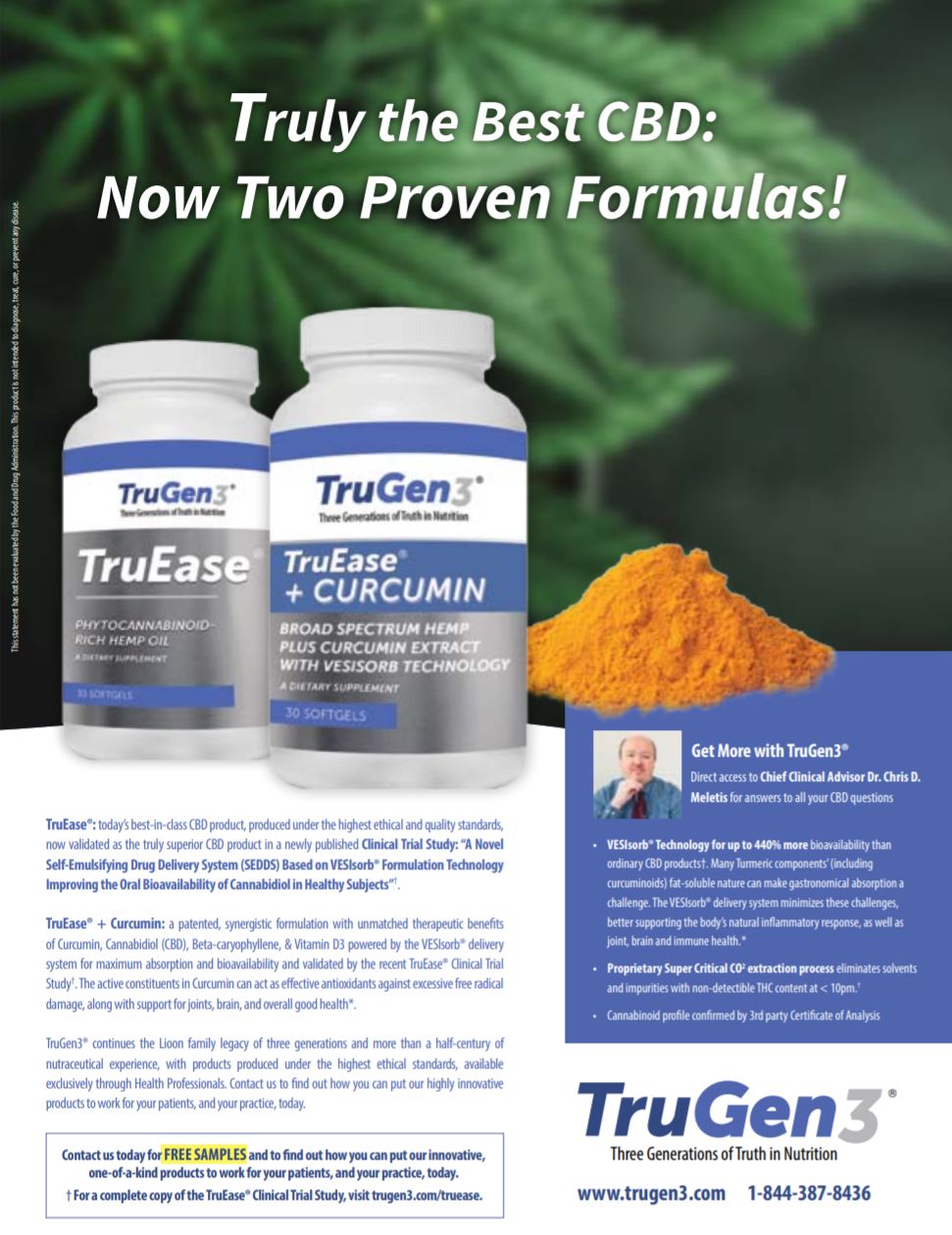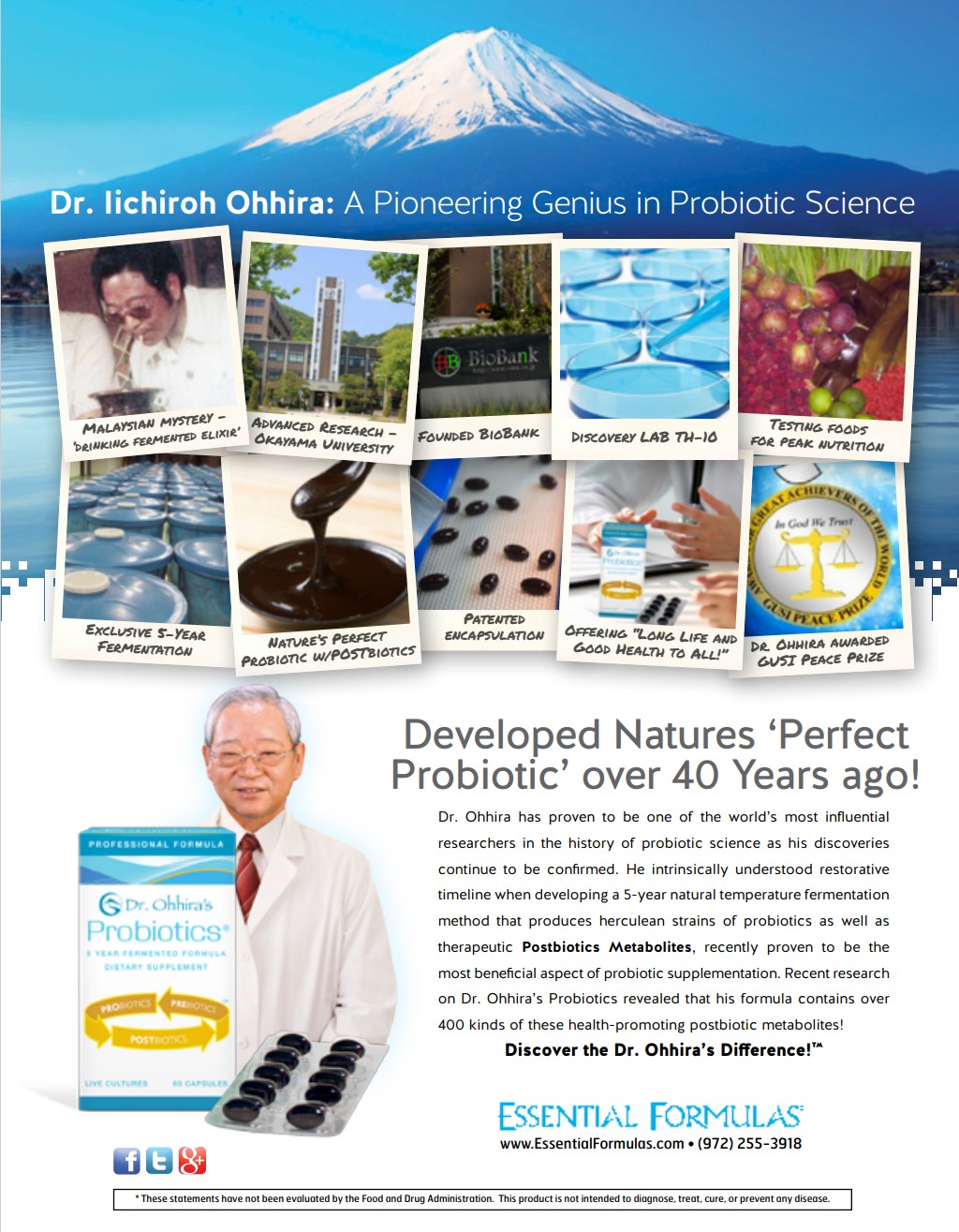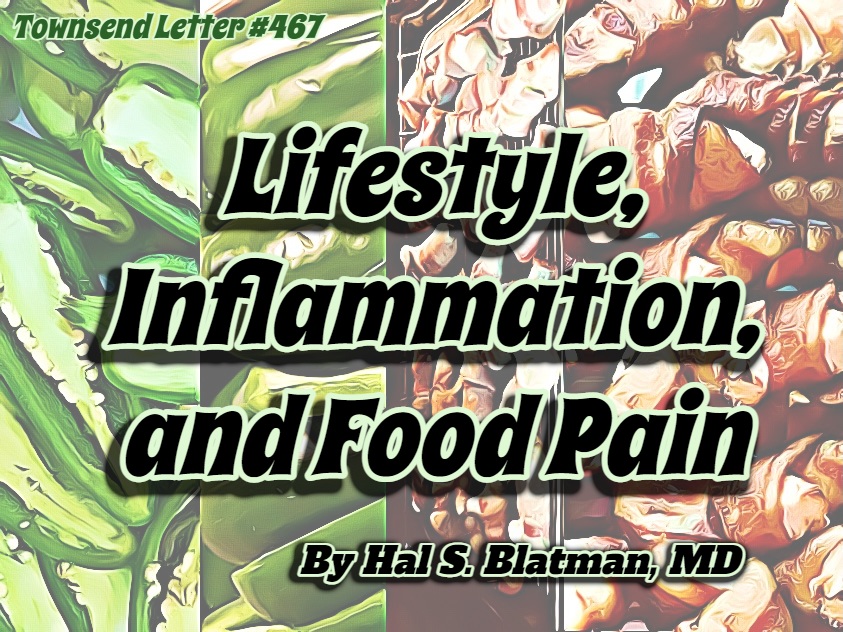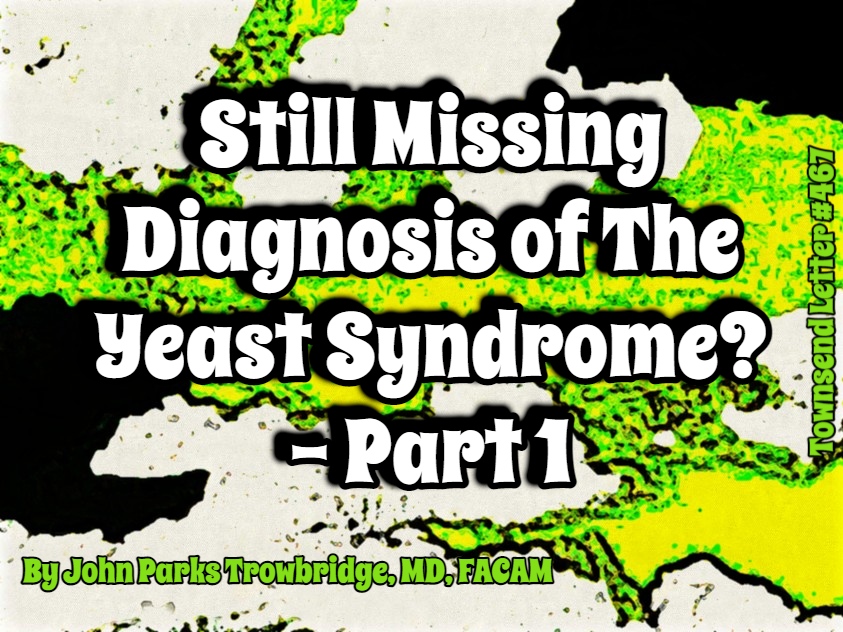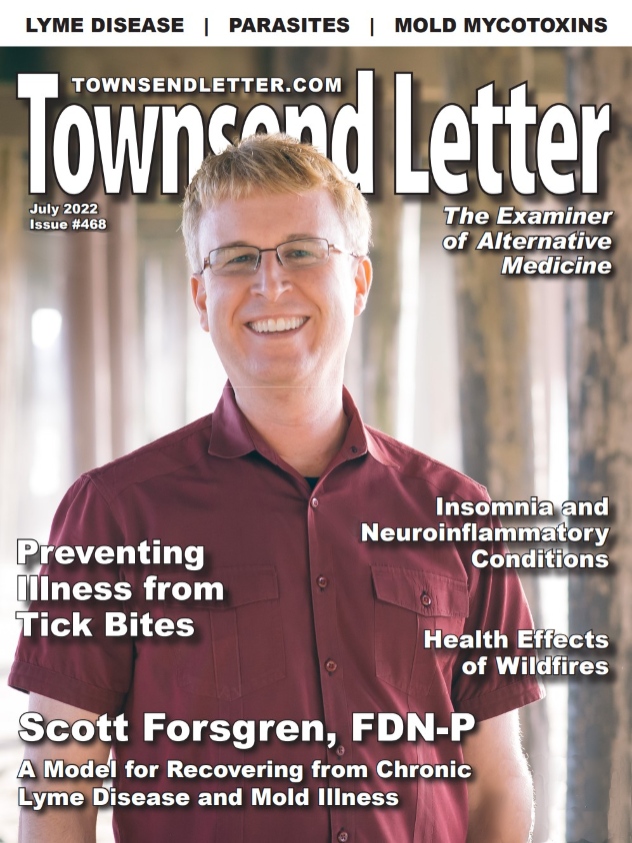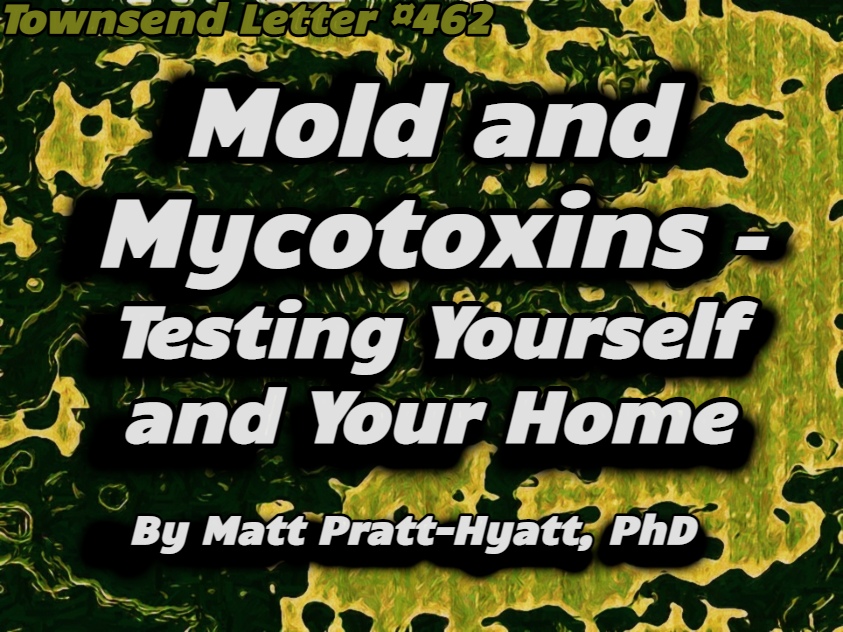By Scott Forsgren, FDN-P, HHP
Introduction
In 1996, I was bitten by a tick in Northern California. Several months later in 1997, over the course of a weekend, my health rapidly deteriorated to the point that I was unsure if I would survive. I had never experienced anything quite so frightening in my life at that point; nor have I since.
I had full body burning sensations in my skin, difficulty walking, issues with my balance, cognitive issues, muscle and joint pain, crawling sensations, tremors, twitching, light sensitivity, GI issues, rapid heartbeat, vision issues; and the list went on….
Over the next eight years, I worked with 45 doctors with limited progress and only a diagnosis of chronic fatigue syndrome (CFS/ME) and fibromyalgia based on symptoms—but no root cause. In 2005, after an MD sent me to an acupuncturist that did Electro-Acupuncture According to Voll (EAV; a computer-based system of energetic testing), it was suggested that I have my doctor test for Borrelia, Bartonella, Babesia, and Ehrlichia. Ultimately, blood testing confirmed an unexpected diagnosis, and my journey with chronic Lyme disease began.
Shortly after, I learned about the work of Ritchie C. Shoemaker, MD, and his book Mold Warriors. That exploration led to the recognition that exposure to a water-damaged building was another key aspect of my health challenges. At the time, I knew there was mold in my apartment, but no one was talking about the consequences of living in such an environment.
Fortunately, today I am doing very well. I continue to take good care of and prioritize myself—which was one of the most important lessons of the journey and something that I had not been doing very well prior to having become ill. Today, I am blessed to have an active, productive life and am beyond grateful.
A Model for Recovery
Throughout my journey, I have been fortunate to have been connected to several amazing and talented practitioners and healers that became mentors and helped me to shape my view of these conditions. It was an honor to be mentored by Dietrich Klinghardt, MD, PhD, Neil Nathan, MD, Raj Patel, MD, Amy Derksen, ND, Ann Corson, MD, Simon Yu, MD, and others.
What has emerged from my more than 25-year experience is a model for how I might approach recovery, based on what I know today, if I were starting over. It is not a one-size-fits-all “protocol” that will work for everyone. Some steps may or may not apply to a given individual. The order will often be different based on each person’s unique priorities. The goal was to create a framework that would lead to discussion between a patient and their practitioners with the hope of moving their healing journey forward.
The steps are
- Support Detoxification and Drainage
- Improve the External Environment (Mold/EMFs)
- Optimize Sleep
- Work on Mental and Emotional Contributors
- Retrain the Limbic System and Tone the Vagus Nerve
- Stabilize Mast Cells, Reduce Inflammation, and Modulate the Immune System
- Optimize Hydration, Nutrition, Microbiome, and Gut Health
- Support Mitochondria, Adrenals, KPU and Coagulation
- Address Microbial Overgrowths
- Viral and Retroviral Support
- Parasites and Dysbiosis/SIBO Support
- Fungal Colonization and Yeast Support
- Lyme and coinfections
- Biofilm Support
- Consider Dental Contributors
- Support Regeneration and Restoration
Step 1: Support Detoxification and Drainage
In my experience, detoxification and drainage are the most important aspects of any recovery protocol, and thus are the foundation. We live in a soup of environmental toxicants never before experienced by the human race. I do not personally believe that we would experience conditions like chronic Lyme disease to the extent that we are today if we did not have such a toxic burden – or terrain. Improving the terrain is the road back.
The first, and commonly overlooked, step is to reduce as much of the incoming toxicant burden as possible. Personal care products, scented products, laundry products, and home cleaning products should be thoroughly evaluated to ensure they are not a source of additional toxicity. Pure air, pure food, and pure water are critical in optimizing health. Various medical implants, including breast implants, may also serve as an ongoing source of toxicity within the body.
“Detoxification” conceptually is the incorporation of binders. Toxins move from the liver to the bile to the gallbladder and then to the small intestine. Binders are then needed to adsorb or “bind” to these toxins in order to minimize enterohepatic recirculation of toxins and maximize excretion via the stool.
“Drainage” is supporting the body’s innate ability to process and excrete toxins via the liver, gallbladder, kidneys, lymphatics, extracellular matrix, colon, skin, and lungs. All of the exit routes or channels of elimination or emunctories must be optimized and supported. Constipation and healing do not go together.
In the binder realm, Supreme Nutrition Products Takesumi Supreme™ has been a favorite for many years. In recent years, CellCore Biosciences ViRadChem, Biotoxin Binder, and HM-ET have been added to the toolbox. Beyond Balance® TOX-EASE BIND®, Bio-Botanical Research® GI Detox+, BioPure® chlorella and ZeoBind®, and bentonite clays such as Yerba Prima® Great Plains® Bentonite Detox or Premier Research Labs Medi-Clay FX™ are often helpful tools.
When we think about binding agents that act primarily in the GI tract, optimizing bile production and flow is a critical component of maximizing a binder’s ability to bind toxins. If the toxins are instead moved from the liver back into the bloodstream, there will be minimal toxins in the GI tract to bind to. This process has been termed “Phase 2.5 Detoxification” by Kelly Halderman, MD, and discussed by Christopher Shade, PhD, as well.
In the drainage realm, homeopathic tools such as those from Energetix®, Pekana, and DesBio can be powerful allies in shifting the terrain in the direction of health. Herbal support such as milk thistle (liver), dandelion (liver), solidago (kidneys), and red root (lymphatics) can provide further support. BioRay® Liver Life, BioPure® Livessence, Genestra® Liv Complex, Gaia Liver Cleanse, and NutraMedix® Burbur are personal favorites.
Bitters such as Quicksilver Scientific BitterX, Eurbal Hildegard’s Original Bitters Tablets, or NatureWorks® Swedish Bitters can support optimization of bile flow; as can Uni Key Health® Bile Builder, ox bile, and TUDCA.
Glutathione and melatonin can each be helpful tools in supporting detoxification. Trace minerals can be another key tool in supporting improvement of the terrain and reduction of heavy metals over time. Silica can be a useful tool in reducing aluminum toxicity in the body.
A broad detoxification and drainage approach can be a powerful tool for optimizing health. Later in a protocol, if one requires more targeted support for heavy metals, pesticides, chemicals, mycotoxins, or other toxicants, there may be value in exploring more specific tools. Heavy metal chelators such as DMPS and DMSA, for example, would not be considered until much later, if at all.
Furthermore, it is interesting to consider that microbes such as Candida and many parasites may actually be allowed in the body, in part, to serve us in that they hold or concentrate heavy metals in order to protect us from their detrimental effects. Thus, detoxification can be viewed as an indirect antimicrobial strategy as well.
Movement is a key aspect of detoxification. Life is about flow; stagnation is the opposite of flow and of life. Keeping the lymphatic system moving, or flowing, is critical. Fortunately, walking is a powerful strategy for this purpose. Exercise should not push beyond what is comfortable or within one’s level of capability at the time; pushing too hard can make things worse.
Lastly, there are several tools that can be helpful adjunct interventions for supporting the removal of toxicants from the body. These may include
- Coffee Enemas
- Colonics
- Ionic Foot Baths
- Castor Oil Packs
- Oil Pulling
- Peloid Mud Baths
- Liver / Gallbladder Flushes (with medical supervision)
- Sauna (though may not be the place to start and can lead to toxin mobilization within the body)
Step 2: Improve the External Environment (Mold/EMFs)
Our internal environment will only ever be as healthy as our external environment: the external environment being the likely cause of so many chronic conditions today. We can take supplements all day long, but if the external environment in our home, workplace, school, or even our car is our kryptonite, we will never regain our superhero status.
First is mold and the soup of toxic materials that exist within water-damaged buildings; this may include bacteria, endotoxins, mVOCs, and other materials. For many with chronic Lyme disease, exposure to mold may be a very significant factor. In my personal journey, mold illness may have been even more of an issue than Lyme disease ever was. Many people with chronic Lyme disease have significant mold exposure in their history if it is looked for.
There is no perfect test for mold in the external environment, but a reasonable place to start may be the Environmental Relative Moldiness Index (ERMI) from Mycometrics (https://Mycometrics.com) or EnviroBiomics (https://EnviroBiomics.com). ERMI results can then be used to calculate a HERTSMI-2 score, which is another indication of the potential for an environment to not be health-supporting.
Another helpful tool done in addition to an ERMI can be mold plate testing such as that offered by ImmunoLytics (https://ImmunoLytics.com). If finances are not a constraint, the preferred option would be to find an Indoor Environmental Professional (IEP) to do professional testing; ISEAI (https://ISEAI.org) is a top resource for finding vetted IEPs that understand biotoxin illness. Similar to doing a regular physical exam on a human body, regular testing of the external environment, such as on a yearly interval, can be a powerful health-promoting strategy.
Another way to explore the potential of mold as a contributor to one’s condition is to look for evidence of mold toxins, or mycotoxins, in the urine. While these tests are somewhat debated and some argue that food sources can impact the results, in my experience they have been tremendously helpful. Labs that offer these include RealTime Laboratories (https://RealTimeLab.com), Great Plains Laboratory (https://GreatPlainsLaboratory.com), and Vibrant Wellness (https://Vibrant-Wellness.com).
Once an exposure has been identified, the options are to remediate or to find a new environment that better supports health restoration. While some people will not be able to recover in the same environment they became sick in, remediation is at least working with a known entity. Estimates suggest that between 50-90% of buildings have some degree of water damage, and a new environment may represent an unknown with potentially new issues that may not lead to the improvement one had hoped for.
Working closely with an IEP can help to determine which path forward may be the best option. While this process is not an easy one, it must be done. Ideally, improving the external environment comes very early in the recovery process. If one is dealing with chronic Lyme disease and has not explored the impact of exposure to a water-damaged building, they are likely doing themselves a great disservice.
Air filtration devices can be of benefit, but they are not the solution alone. The core source of the exposure needs to be identified and removed. Mold in a building is much like cancer in a body; ideally you remove the tumor before starting the chemotherapy. It may be akin to a hole in the bottom of a sinking boat; it is best to plug the hole rather than to bail out the water with a paper towel.
For mold and mycotoxin detoxification, CellCore Biosciences Biotoxin Binder and Carboxy, Beyond Balance® TOX-EASE BIND® and PRO-MYCO™, Supreme Nutrition Products Takesumi Supreme™ and Smilax Supreme®, Researched Nutritionals® MycoPul®, liposomal glutathione, and calcium D-glucarate may be helpful interventions. Some practitioners find cholestyramine a helpful tool as well. My observation has been that natural options often work well if the source of the exposure has been addressed, but that cholestyramine may be needed in those with ongoing or significant exposures. While not as effective, Welchol may be a better tolerated alternative to cholestyramine.
Another debated aspect of recovery from mold illness is the potential for colonization of fungal organisms inside the body; particularly in the sinuses and GI tract, which may lead to our own internal mycotoxin-production factory. This may mean that no matter how clean the external environment has now become, the focus may later need to shift to the internal environment to fully address the issue. This will be discussed later.
When mold exposure has been ruled out or addressed, a significant roadblock to recovery has been removed. It cannot be stressed enough how important this area is to explore as it can be one of the most significant impedances to overall progress. Don’t miss this important issue; it may save years of struggle in one’s recovery journey from “chronic Lyme disease.”
Next, EMFs are becoming a more and more prevalent environmental toxin in our world that can drain our vitality and keep our cells in a sympathetic dominant state that has the potential to impair our detoxification functions. Turning off Wi-Fi, tossing cordless phones, sleeping in a sleep sanctuary or canopy, and minimizing cell phone use can be helpful strategies.
It is also important to recognize that electrical wiring in the walls and dirty electricity impact our body voltage in our sleep location; assessing body voltage using a meter may be a helpful exercise. Reducing exposure to EMF is a critical part of the recovery process. Regular grounding, or earthing, can help the body to mitigate the effects of EMF exposure.
Dietrich Klinghardt MD, PhD, has suggested that EMFs lead to molds creating more mycotoxins. He has correlated the increase in EMFs with the increase in mold growth in buildings. He often says the first step to addressing mold in the external environment is to turn off Wi-Fi. Not only that, but he has observed that EMFs trigger the microbes within us to become more aggressive. There is no road back to health in the Klinghardt world without reducing EMF exposure.
While harmonization devices may be the icing on the cake for some, reduction of exposure is the cake itself. Ignoring exposure and attempting to use harmonization devices as a sole strategy is not a solid path forward.
EMF sensitivity has been correlated to the level of heavy metal toxicity in the body (as well as to metal implants), and thus, a focus on detoxification and removal of heavy metals may reduce symptoms of electromagnetic hypersensitivity (EHS) over time. Thus, the detoxification focus discussed on step 1 is another strategy for minimizing the effects of EMFs that we cannot mitigate over the long haul.
While reduction of exposure is key, some may benefit from tools such as DesBio EMF Protect and Balance, BioPure® Rosemary, BioPure® Propolis, Ki Science Ray Wave, Functional Genomic Nutrition EMF PROTECT, magnesium, melatonin, or NADH to mitigate some of the damaging effects.
A common mistake in recovery is to minimize work in this step and to not be strict enough with avoidance of water-damaged buildings and reduction of EMF exposure. Raj Patel, MD, often suggests a “house arrest” with zero exposure to environments not known to be safe, as even the smallest inflammatory “hits” may prevent the overall program from working in some people. Creating a safe environment for recovery is paramount.
Step 3: Optimize Sleep
Everyone will be unique in terms of the ideal order of these steps, but EMFs are one of the key reasons people experience insomnia and the reason that EMFs were discussed in step 2. If we don’t sleep, we don’t heal. Creating the right environment for sleep is key to creating the right environment for healing.
There are numerous supplements such as melatonin, Honokiol, GABA, 5HTP, magnesium and others that some may benefit from; but looking at blood sugar with a continuous glucose monitor (CGM), measuring oxygen saturation, using a weighted blanket, implementing inclined bed therapy, and exploring devices such as BrainTap® and Apollo™ can be supportive tools. Minimizing blue light exposure at night and ensuring the sleep environment is dark are often important considerations.
Tracking sleep with a device such as the Ōura ring (in airplane mode) can help to reinforce what changes are improving or impairing sleep quality. Similarly, the Wellue O2Ring™ Continuous Ring Oxygen Monitor can be a helpful tool for measuring oxygen saturation while sleeping.
Mast cell activation syndrome and histamine intolerance can play a role in sleep dysregulation and will be discussed in step 6.
Every bit of improvement we are able to achieve with our sleep has the potential to exponentially increase our overall healing potential.
Step 4: Work on Mental and Emotional Contributors
Past emotional traumas and conflicts can set the stage for illness. Many have been invalidated by the medical community such that their physical illness led to an experience that created an emotional trauma. Either way, mental and emotional contributors must be explored to maximize health outcomes.
Everyone has some emotional baggage to work through. Accepting that reality doesn’t mean that the illness is all in your head, but that our mental and emotional health do play a role in the development of physical illnesses.
In the chronic Lyme community, a common pattern is the Type A overachiever perfectionist. Many may not feel at a deep level that they deserve to be well.
Cultivating healthy relationships, eliminating toxic people, and experiencing joy all play a role. It is also important not to identify with the illness; it is a part of us, but it is not us. Being able to move past our stories and create a new reality is critical.
In Dr. Klinghardt’s 5 Levels of Healing model, work in this arena is third level work. Shifts here are far more powerful than shifts on the physical level alone.
Viewing illness as a gift rather than a curse or reframing the experience in more positive terms can be very healing. What happens in our lives is often intended to help us; to show us more balance. Applying what the universe is attempting to reveal to us can lead to more rapid identification of the pieces we need to get well on a physical level.
Tools in this realm may include: Eye Movement Desensitization and Reprocessing (EMDR), Applied PsychoNeurobiology (APN), Mental Field Therapy (MFT), Emotional Freedom Technique (EFT), Emotion Code, and similar modalities. Amy B. Scher’s book How to Heal Yourself When No One Else Can is an excellent guide for work in this realm.
Step 5: Retrain the Limbic System and Tone the Vagus Nerve
Given that the order of these steps may vary based on the individual’s illness contributors, this step could make sense elsewhere – sometimes earlier, sometimes later. For the most part, the trigger(s) of the limbic system impairment should be addressed before limbic system retraining tools will provide their full benefit. However, in some cases, doing work in this realm expands the toolbox of supplements and other interventions that one may be able to tolerate and thus, may have benefit earlier in a protocol.
The limbic system includes the hypothalamus, hippocampus, amygdala, and cingulate cortex. It is the “feeling and reacting brain” and is involved in determining our level of safety in terms of items one may smell, see, hear, taste, and feel. The limbic system is thought of as the body’s “alarm center” or “anxiety switch”. It impacts the functioning of the immune system, endocrine system, and the autonomic nervous system (which controls blood pressure, heart rate, breathing, digestion, and more).
Numerous triggers may lead to limbic system impairment, including exposure to water-damaged buildings, chemicals, pesticides, bacteria, viruses, and physical, mental, or emotional trauma; and more.
Coming back to the earlier comments on timing of these tools, if you think of a threat like Lyme disease or mold illness as a tiger, you generally will find the most benefit from limbic system retraining once your tiger is now more of a purring kitten, but your limbic system still interprets it as the threatening tiger. That’s the ideal time to use tools to reboot the limbic system; such that its perception of threat is more equivalent to the actual threat.
Some people think of limbic system retraining as being more in the mental/emotional realm. While it is true that an emotional event could be the trigger for the impairment, limbic system impairment can entirely be a response to a physical or biochemical threat.
For many, limbic system retraining has been the single most helpful tool in recovering from complex, chronic illness. Those with food and chemical sensitivities often notice the benefits the fastest; but these symptoms are not required for these systems to provide benefit.
The most well-known tools in this arena are Dynamic Neural Training System (DNRS) and The Gupta Program. Another benefit of these tools is that they focus our attention on a new reality.
Beyond working on the limbic system, tonification of the vagus nerve and parasympathetics and calming of the nervous system are often powerful strategies.
Some tools in this realm include BrainTap®, Frequency Specific Microcurrent (FSM), vagal nerve stimulators, HeartMath, and the exercises from Stanley Rosenberg’s book Accessing the Healing Power of the Vagus Nerve: Self-Help Exercises for Anxiety, Depression, Trauma, and Autism. Even the ionic footbaths discussed earlier such as the IonCleanse by AMD support the parasympathetic nervous system to allow for more efficient detoxification.
The body needs to be in a parasympathetic state in order to rest, digest, detoxify, and heal.
Step 6: Stabilize Mast Cells, Reduce Inflammation, and Modulate the Immune System
In conditions like chronic Lyme disease, it has become more apparent over time that many of the symptoms experienced are about the host response to the microbe and not the presence of the microbe alone. Getting healthy is not solely about killing bugs—as it is unlikely that Lyme and co-infections will ever be fully eradicated. The bug does not make the disease.
If the immune system is hypervigilant, hyper-reactive, overactive, dysregulated, or responding in an autoimmune fashion, that inappropriate response may be the driver of many of the symptoms one experiences.

A significant portion of the inflammation in these conditions is driven by mast cell activation syndrome (MCAS) and histamine intolerance. The primary trigger for mast cells in these populations is likely mold exposure, but many other triggers may be factors such as: parasites, Lyme and co-infections, environmental toxicants, medications, foods, supplements, temperature changes, physical and/or emotional stress, EMFs, and more.
I personally suspect that the impact of EMFs in MCAS will be better understood over time. Theo Theoharides, PhD, MD, has suggested that mast cells are 10 times more activated in the presence of a cell phone. Our external environment matters when it comes to healing from these complex, chronic conditions.
Early on, a low histamine diet may be very helpful in reducing inflammation, minimizing symptoms, and setting the stage for other interventions to work more effectively. Additionally, inflammation impairs detoxification; thus, attempts to reduce inflammation improve detoxification efficiency. Many are often surprised to learn that items once thought to be health-promoting may not be in this population – kombucha, avocados, bone broth, and fermented foods; even many probiotics can be histamine promoters.
Next, implementing mast cell stabilizers and histamine reducers such as quercetin, luteolin, holy basil, Algonot NeuroProtek®, Seeking Health® Probiota HistaminX, QuickSilver Hista-Aid, Beyond Balance® MAST-EASE®, Pure Encapsulations® Hist Reset, and Researched Nutritionals® HistaQuel® can provide relief. Some may benefit from Ketotifen, Cromolyn, DAO, Allegra, Claritin, Montelukast, Famotidine, and various other mast cell stabilizers or histamine reducers.
While treating MCAS may lead to a notable shift in symptoms, it is not addressing the root causes or triggers of the condition, which must be simultaneously addressed in order to make longer-term improvement.
Systemic inflammation plays a key role in these conditions. Reducing inflammation can also support detoxification efforts. Tools may include Pro-Resolving Mediators such as Metagenics® SPM Active® or Microbiome Labs Gut Specific Fish Oil as well as tools like Ortho Molecular Products® Inflamma-bLOX, FlexNow, Researched Nutritionals® CytoQuel®, UNIQUE E®, curcumin, and others.
Tools that may help with immune modulation may include low dose naltrexone (LDN), low dose immunotherapy (LDI), homeopathy, peptides, Beyond Balance® IMN-CALM®, and the PureResponse™ line created by Samuel F. Yanuck, DC, for Pure Encapsulations®–such as Balanced Immune, Innate Immune Support, Th1 Support, and Th2 Modulator.
Getting well is not about “boosting” the immune system, which can actually make things worse; it is more about modulating, calming, and creating integration within our microbiome.
Furthermore, reducing the inflammatory burden as much as possible by addressing the external environment from step 2 and implementing a low-histamine diet and stabilizing mast cells sets the stage for later work in the microbial arena in step 9. If one does not do this foundational work, more aggressive tools are often needed, and people may be on protocols with dozens and dozens of supplements that they may not need.
Step 7: Optimize Hydration, Nutrition, Microbiome, and Gut Health
Many with biotoxin illness have low anti-diuretic hormone (ADH); they drink all day, pee it out, and are still cellularly dehydrated. Structuring water, adding electrolytes, cell salts, trace minerals, or sea salt can be a good start. Energetix® Rehydration can be another helpful tool.
Given that the immune system comes largely from the gut and particularly in the presence of intestinal hyperpermeability, certain foods may serve as triggers for immune dysregulation and mast cell reactions. Removing triggering foods such as gluten, A1 cow dairy, sugar, and high histamine foods can help to reduce the overflowing inflammatory bucket. While the right diet needs to be personalized to each individual, and to their unique food sensitivities, a low histamine diet is often a helpful tool.
What we do eat should be highly nutrient dense and include healthy fats and proteins. I personally include a “Power Shake” with a high-quality protein, numerous fibers, healthy fats, a phospholipid blend, and organic nut milk in my morning routine. It has been a game-changer.
Supporting the diversity of the microbiome with Microbiome Labs MegaSporeBiotic™, which may also help with inflammation and immune modulation as well as leaky gut, has been a favorite tool. It has been generally well-tolerated in those with MCAS and SIBO as well. Other tools for improving gut health may include Microbiome Labs MegaPre™ and MegaMucosa™, BPC-157, and ION* Gut Support (formerly known as RESTORE).
Step 8: Support Mitochondria, Adrenals, KPU and Coagulation
Cellular energy or ATP is the energy currency of the body, which is needed to support detoxification, function, and repair. Red light therapy can be a helpful tool in this realm as can Frequency Specific Microcurrent (FSM).
Many supplements exist in this realm such as CoQ10, PQQ, acetyl-L-carnitine; more recently, applications of NAD such as NADH, NMN, and NR are worth exploration as is Urolithin A. Researched Nutritionals® offers several tools for mitochondrial support including ATP Fuel®, ATP 360®, and NT Factor® Energy, which contains mitochondrial supporting lipids and other co-factors.
One caution is that extracellular ATP is the danger signal as described by Robert K. Naviaux, MD, PhD in his Cell Danger Response (CDR) model. Thus, mitochondrial support is often best done low and slow if one is still in the early stages of the CDR model; or attempts to support the mitochondria may backfire. The body is a finely tuned machine with a delicate balance. Attempts to be too aggressive with treatment may further trigger a protective response and impede progress.
While it may ultimately be more important to support the mitochondria, adrenal support can be important as well. With a long illness, the adrenals can become exhausted and benefit from adrenal support or adaptogens. BioRay® Loving Energy® is a personal favorite. Holy Basil can be a helpful tool that supports the body on many levels including adrenal, histamine, and microbial support. Similarly, ashwagandha can support adrenals, histamine, microbial, and sleep support.
Dietrich Klinghardt, MD, PhD, has talked about Kryptopyrroluria (KPU) for many years. Our collaboration “Kryptopyrroluria (aka Hemopyrrollactamuria) 2017: A Major Piece of the Puzzle in Overcoming Chronic Lyme Disease“ was published in the July 2017 issue of Townsend Letter.
If one has the KPU condition and is deficient in zinc, B vitamins, and other co-factors, WBCs are “like an army with no bullets.” Supporting these deficiencies can support immune defense. At the same time, this should be done slowly as to not trigger a release of heavy metals and potentially increase in inflammation. BioPure® CORE and CORE-S are formulations in this realm based on Dr. Klinghardt’s work.
Lastly, and possibly most importantly, hypercoagulation is a commonly overlooked consideration in complex, chronic illnesses. When blood viscosity is thickened, nutrient and oxygen delivery, as well as removal of toxic wastes, are impaired. Hypercoagulation can be triggered by numerous infections such as Babesia; as well as toxicants such as mold, heavy metals, and EMFs. Boluoke and nattokinase are commonly used interventions. Detailed testing and monitoring are suggested to correctly identify and address this issue. Hypercoagulation is an area that is commonly overlooked.
Step 9: Address Microbial Overgrowths
Killing bugs is not the priority in a well-balanced health restoration protocol, which is why addressing microbial overgrowths is near the end of this discussion.
At one time, I believed that killing bugs was the priority, detoxification was next, and mental/emotional health was last. I now view healing as the exact opposite with mental/emotional healthy being the priority, detoxification being the more important focus in terms of the physical body, and killing bugs, while important, being the least important of the three.
Observation has shown that the more foundational work done in earlier steps, the less aggressive one may need to be with the microbial focus. Raj Patel, MD, suggests that if the foundational work is done to address mold exposures and mast cell activation, which minimize the ongoing inflammatory burden, addressing microbial overgrowths often requires only a “light tough” or “micro-dosing strategy” to adequately address.
Within the microbial support focus against different pathogens, the order will vary, but a common approach is to start with viral and retroviral stress as these can be significant players and treatment is generally well-tolerated. Next, the focus may shift to parasites and SIBO and GI dysbiosis; then to fungal colonization and yeast. At that point, Lyme (Borrelia) and co-infections may be explored. Finally, some may need to address biofilms for longer-term recovery.
Viral and Retroviral Support. Many with chronic illness have reactivation of EBV, HHV-6, and VZV (Zoster) as well as endogenous retroviruses (which some suggest are worsened by EMF exposure). Once these are reactivated, they often need long-term support while other contributors are being addressed. Potentially helpful tools include BioPure® EN-V™, Vital 9, and Cistus (tincture or tea), Beyond Balance® IMN-V-II™ or IMN-V-III™, CellCore Biosciences ViRadChem, sulforaphane, pantethine, selenium, zinc, lysine as well as homeopathics such as Energetix® Viru-Chord or HZ-Chord.
Parasites, SIBO, and GI Dysbiosis Support. Parasites are more common than most recognize and are not difficult to acquire—even in those that have never left the United States. Parasites consist of larger organisms such as helminths and smaller organisms such as protozoa like Giardia, Cryptosporidium, Blastocystis, Toxoplasma, and others.
Parasite testing is notoriously poor. My favorite approach is to use multiple evaluative tools, including ParaWellness Research (https://ParaWellnessResearch.com), Diagnostic Solutions GI-MAP™, or DiagnosTechs™ Expanded Gastrointestinal Health Panel. Steven Phillips, MD, has often uncovered parasites with a panel of tests through Quest. Beyond these options, energetic testing with tools like Dietrich Klingahrdt MD, PhD’s Autonomic Response Testing (ART), ZYTO™, QEST4™, or Simon Yu, MD’s Acupuncture Meridian Assessment (AMA) can provide insights into potential parasite-related stressors. No one test is perfect when it comes to parasite exploration.
Potential tools include Jernigan Paragen™, Beyond Balance® PARALLEVIARE®, Zahler ParaGuard™, and CellCore Biosciences PARA 1-4; as well as homeopathics such as UNDA 39 and Energetix® Para-Chord. Pharmaceutical antiparasitics can shine in this realm. One caveat is that when killing parasites and fungi, it is important to consider the potential heavy metal release into the body and to ensure that detoxification is still being adequately supported throughout; in other words, step 1 of this model continues, and each step builds upon the prior steps.
With SIBO, while there can be an overgrowth of bacteria (SIBO) or fungi (SIFO), the core issue is likely more about the autonomic nervous system, the vagus nerve, the migrating motor complex, and bile production and flow than about killing a bug. That said, incorporation of tools to balance the microbiome can be helpful; as they are in more generalized dysbiosis such as Clostridia, H. Pylori, Klebsiella, and others where tools like Biocidin®, Beyond Balance® IMN-GI™ and IMN-B™, MegaSporeBiotic™ and others may be supportive.
Fungal Colonization and Yeast Support. Fungi consist of yeasts and molds. Most are familiar with Candida, which is a yeast and may require treatment. Further, colonization of molds such as Aspergillus from water-damaged building exposures is a possibility and may impact the sinuses and the gut, essentially creating a mycotoxin-producing factory inside the body. Neil Nathan, MD is an expert in this realm, and his book Toxic: Heal Your Body from Mold Toxicity, Lyme Disease, Multiple Chemical Sensitivities, and Chronic Environmental Illness explores this topic in detail.
Potential tools include Thorne® SF722®, Microbiome Labs MegaMycoBalance™, Metagenics Candibactin AR® or BR®, Beyond Balance® MYCOREGEN®, and Byron White Formulas™ A-FNG; as well as pharmaceutical options such as Itraconazole. Many researchers feel that fungi are a significant threat to human health.
Lyme and Co-Infection Support. With Lyme (Borrelia) and co-infections such as Bartonella and Babesia, as well as opportunistic infections such as Mycoplasma and Chlamydia, it is often best to start with a layered approach; unlayering each pathogen with targeted interventions one at a time as to not overwhelm the system.
Starting with a broad-spectrum tool may lead to more die-off and inflammation than can be comfortably tolerated. Additionally, being more targeted can itself lead the practitioner to insights as to what may be impacting a given person and benefit from additional support. If someone has a strong positive or negative reaction to a Bartonella intervention, that may be very useful information.
Once a layered approach has been implemented, it can then make sense to move on to broader spectrum tools as well. Many natural tools exist in this realm that can be quite supportive and beneficial. While pharmaceutical tools may not be required to recover health, it’s always good to be open to the broadest toolbox possible, and some tools in this realm such as Disulfiram have been quite helpful for many in recent years.
Some of my favorite product lines in this realm are BioPure®, Beyond Balance®, Byron White Formulas™, CellCore Biosciences, DesBio, Maypa Herbals, NutraMedix®, Researched Nutritionals®, Supreme Nutrition Products, and Vital Plan.
Other tools may include ozone, immune-modulating and antimicrobial peptides, as well as the incorporation of physics-based tools such as the FREmedica WAVE 1 device.
Biofilm Support. Chronic infections are often protected in the body by biofilms. While many recover without a specific focus on biofilms, the incorporation of biofilm support in a protocol can be very helpful. While strategies vary, these are often helpful later in the process for a short period of time; once free-floating organisms have been addressed.
Breaking down biofilms may lead to a release of microbes and toxins into the system and can trigger MCAS and other immune components as well as generalized inflammation. Having continued support for microbial and toxic burdens while working with biofilms is important.
Potential tools include BioPure® Cistus tea which is said to be a selective biofilm breaker (not all biofilms are bad); as well as products such as Beyond Balance® MC-BFM-1®, Klaire Labs Interfase® Plus, Supreme Nutrition Products BFB-1™ and BFB-2™, and other enzyme-based products. Some of the enzymes used earlier for hypercoagulation, such as Boluoke, may have a gentler role in supporting the reduction of biofilms—as can interventions like Pectasol Modified Citrus Pectin.
Step 10: Consider Dental Contributors
Considering dental contributors may need to be done earlier in the process in a given individual. However, based on the work of Dietrich Klinghardt, MD, PhD, it is often best to address retroviral stress prior. Further, based on the work of Simon Yu, MD, it is often appropriate to address parasites prior to significant dental interventions.
Additionally, exploring dental work prior to the body being ready for it can make things worse in some people. Ideally, other steps would be dialed in prior to significant dental interventions, particularly surgical procedures such as to address cavitations.
Given that this population often has a primary doctor or “captain of the ship” guiding their care, it is always best to ensure collaboration between the doctors and dentists or oral surgeons to ensure that the timing is right, the body is well-supported, and that there is agreement in terms of the path forward. Amalgams, root canals, and cavitations can all be significant stressors on the system, but they may not be the place to start.
Amalgams may contribute to our body burden of mercury and other heavy metals. Removal of amalgams should only be done by a biological dentist. While often helpful, far too many people have worsened their overall state of health by pursuing removal that was done incorrectly.
Root canals may have far-reaching implications within the body as a dead tooth left in the mouth can impact the organs and meridians associated with the tooth; as well as serving as an ongoing source of infection and toxicity within the body.
Cavitations are infections in the jawbone often in areas of prior tooth extractions, but these can occur elsewhere. Those with Lyme-related co-infections and retroviral activation may be at higher risk for dental cavitations, and these will generally require surgical intervention to remove the stress from the body. Sadly, cavitations are not uncommon in those with chronic Lyme disease.
The tonsils are another area that may warrant exploration in some cases; particularly in those with a history of Strep or in those with a PANDAS-like condition. Some, myself included, have explored this with regenerative cryotherapy in Germany.
While significant dental issues will require a biological dentist or oral surgeon to address, self-care for optimizing the oral biome may include Supreme Nutrition Products Oral Defense™, Bio-Botanical Research Dentalcidin™, essential oil blends such as Trusted Health Products OraMD, and oil pulling. I have found the use of Bite Toothpaste Bits and Researched Nutritionals® OraMax™ to be a supportive combination.
While work in this realm can be a key to recovering health, it is not to be taken lightly. Creating a supportive healing team with solid collaboration among your providers is important.
Step 11: Support Regeneration and Restoration
David Jernigan, DNM, DC, used the analogy of termites in a recent podcast where treatment can address the termites, but one may still be left with the structural damage from years of hosting the termites. Thus, once the microbial burden has been addressed, there will likely still be a need for interventions that can support regeneration and restoration.
By the time most have gone through chronic Lyme disease and mold illness, it has been years or even decades, and it has taken a toll on the body. There are some tools in this realm that could be introduced earlier in this process. However, at some point, interventions have been in place to detoxify and to reduce the microbial burden, and you reach a point where a focus on regeneration, restoration, and rebuilding may be necessary.
Step 7 discussed the concept of a “Power Shake” which incorporates phospholipids. Phospholipids can be a significant tool in repairing cell membranes. I use the BodyBio PC product in my shake, but there are also practitioners that implement IV lipid therapies based on the work of Patricia Kane, PhD, that may be thought of as a “deep clean” and a significant cell membrane restoration tool.
Numerous peptides have emerged in the past several years that may support repair, regeneration, and restoration of the body. Peptides stand out in this realm, but they have become more restricted by the FDA over time.
Photobiomodulation tools can support the mitochondria in producing ATP as well as supporting collagen which is often negatively impacted by Borrelia. These tools provide our body with photons that assist regeneration.
A personal favorite in this realm for full body restoration support has been Exercise With Oxygen Therapy (EWOT) using the LiveO2 Adaptive Contrast System.
Bioidentical hormone replacement can often be a supportive tool and may be introduced earlier. However, in many cases, a downregulation of hormones like thyroid and testosterone can be an intelligent adaptation by the body to put on the brakes as a protective mechanism; this ties back to the Cell Danger Response discussed earlier. Thus, the application of BHRT may be better accepted by the body when the primary triggers for the Cell Danger Response have been addressed.
While I have not to date been impressed with stem cell therapies for chronic Lyme disease and related conditions, it is an area that I continue to monitor; advances such as with exosomes are ongoing. If someone is considering stem cell therapy, it is often best done very late in the process if being used for systemic benefit; or done for more localized issues such as an injury or deterioration of a joint like a knee.
Conclusion
While recovering from a condition such as chronic Lyme disease or mold illness can be a long process, a marathon not a sprint, advances in the treatment of these conditions continue to emerge at an even more rapid pace than in years past. Having personally dealt with these conditions for over 25 years, so much has changed in the understanding of these conditions in the last several years. New tools and solutions continue to emerge. Don’t ever lose hope; there is hope, and people do get better and move from “dis-ease” to better health!
Disclaimer: Nothing in this article is intended to serve as medical advice. Lyme disease and mold illness are complex conditions which require medical guidance and should not be approached from a self-treatment perspective. Always consult with your medical authority before making any changes to your health optimization protocol.
About the Author
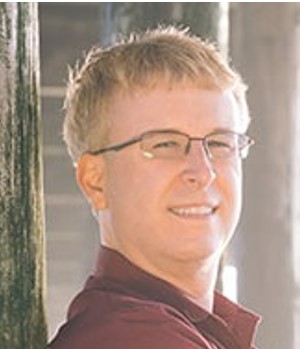
Scott Forsgren, FDN-P, HHP (https://betterhealthguy.com) is a health coach, blogger, podcaster, health writer, and advocate. He is the editor and founder of BetterHealthGuy.com, where he shares his 25-year journey through the world of Lyme disease, mold illness, and the myriad of factors that chronic illness often entails. His podcast “BetterHealthGuy Blogcast” interviews many of the leaders in the field and is available on YouTube, Apple Podcasts, Google Podcasts, Stitcher, Spotify, Amazon Music, and Audible.
He serves on the Board of Directors of LymeLight Foundation (http://lymelightfoundation.org) which provides treatment grants to children and young adults dealing with Lyme disease. He is a member of ILADS (International Lyme and Associated Diseases Society; http://ilads.org) and ISEAI (International Society for Environmentally Acquired Illness; http://iseai.org). He is the co-founder and moderator of The Forum for Integrative Medicine (http://forumforintegrativemedicine.org) which hosts an annual conference bringing together some of the top integrative practitioners to share practical tools for treating complex, chronic illness.



